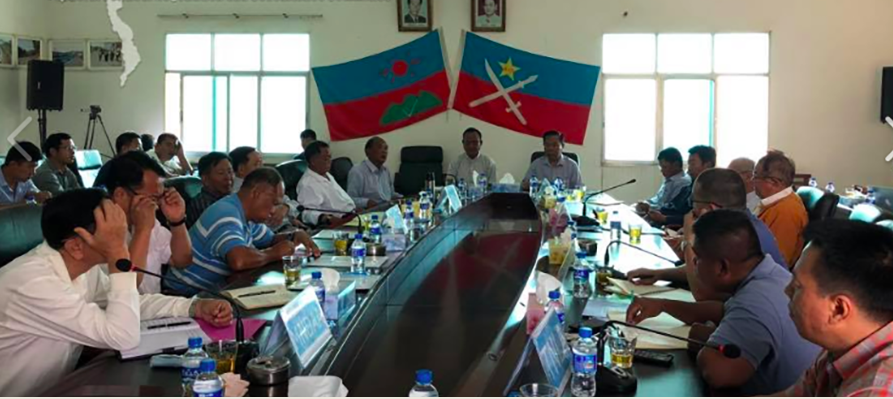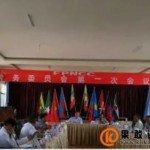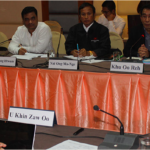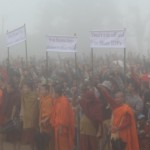By Lawi Weng / The Irrawaddy | June 27, 2018
MON STATE — The Myanmar Army and government continue to pursue a policy of attempting to split alliances of ethnic armed groups in the north of the country, believing that peace will be more easily attained once the blocs have collapsed.
The Federal Political Negotiation and Consultative Committee (FPNCC), the largest of the political groups, has seven members. A spokesperson for the State Counselor’s Office, U Zaw Htay, told reporters that the government would allow the United Wa State Army (UWSA), Kachin Independence Army (KIA), Shan State Progress Party (SSPP), and National Democratic Alliance Army (NDAA) to attend the upcoming Third Session of the 21st Century Panglong Peace Conference, but not the bloc’s other three armed groups, the Arakan Army (AA), Ta’ang National Liberation Army (TNLA) and Myanmar National Democratic Alliance Army (MNDAA).
FPNCC leaders see this as a test by the Myanmar Army (or Tatmadaw) and government, who seek to divide the block’s united political and armed forces.
This “divide and conquer” method has been successfully deployed by Tatmadaw and government against ethnic armed organizations in the past. For example, the United Nationalities Federal Council, an alliance of political groups based in Chiang Mai, northern Thailand, collapsed recently.
The AA, TNLA, and MNDAA are currently worried that the other FPNCC members will abandon them and attend the peace conference.
The UWSA, the nation’s largest ethnic armed group, will play an important role in deciding whether the alliance attends the conference. The KIA is the alliance’s second-most important armed group.
The UWSA serves as the chair of the FPNCC, and has built liaison offices for all member groups at a base in Pangsan, the capital of Wa region. The TNLA became the first FPNCC member to open liaison office in Pangsan last month, and other armed groups will open theirs later, according to a source from the alliance.
The FPNCC has historically maintained the stance that it will only attend the peace conference if all of its members are invited. China brokered the participation of the FPNCC at the Second Session of the peace conference after the Myanmar Army initially refused to allow representatives of the AA, TNLA and MNDAA to attend.
U Mg Mg Soe, a political and military analyst, believes China will try again to secure the participation of all FPNCC members at the upcoming Panglong session. China is expected to pressure the Myanmar Army and the government to allow it, possibly by making some type of deal.
The Irrawaddy tried contacting leaders of a number of armed ethnic groups to find out whether the FPNCC will attend the upcoming Panglong peace conference, which is due to begin on July 11. But the government has not yet invited them, according to some of the leaders.
Col Naw Bu, a spokesperson for the KIA, said his group’s senior leaders had not instructed him yet on what to say regarding whether the KIA will attend the peace conference. Therefore, he could not comment, he told The Irrawaddy.
FPNCC members will make a decision on whether to attend when they receive an invitation from the government, according to an alliance source.
The TNLA, AA and MNDAA are relatively new armed groups, established when the country embarked on political reform under the government of former President U Thein Sein. The Myanmar Army refuses to recognize new armed groups set up during the new era of democratic government. Its position is that it is time for these groups to fight for ethnic rights in Parliament, or outside Parliament within the law.
The Army insists the three groups must disarm as a prerequisite for participating in the peace process, but they have refused.
China wants Myanmar to invite all members of the FPNCC to attend the peace conference. But even Beijing understands that it will never convince the Myanmar Army to allow it to play a major role in the peace process.
China’s efforts at brokering the peace process in Myanmar have not been fully successful, Brig-General Tar Phone Kyaw of the TNLA said via social media through a channel of the PSLF/TNLA Communications Department.
The TNLA has an estimated 6,000 fighters, while the AA and MNDA have an estimated 4,000 fighters each. They would sooner fight than disarm as a prerequisite for talks, according to their leaders. These three armed groups have grown rapidly, are militarily strong and put up a strong fight in recent clashes with the Myanmar Army in Rakhine and northern Shan.
Some experts on ethnic issues believe the Tatmadaw is taking the wrong approach by demanding that the three groups disarm. Instead, they say, the Army should sit down with them and negotiate peace.
This article originally appeared on The Irrawaddy, June 27, 2018.







